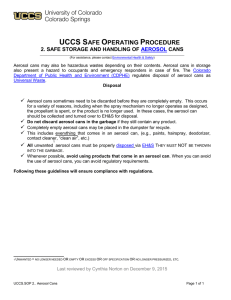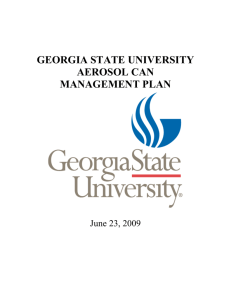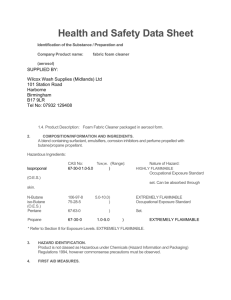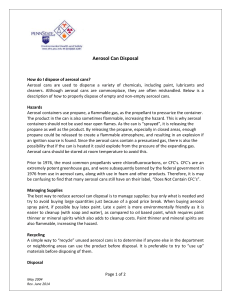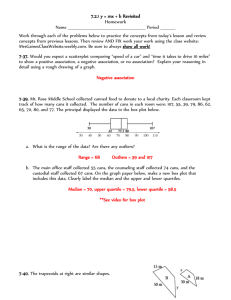Safe Operating Procedure (Revised 2/16) AEROSOL CAN COLLECTION
advertisement
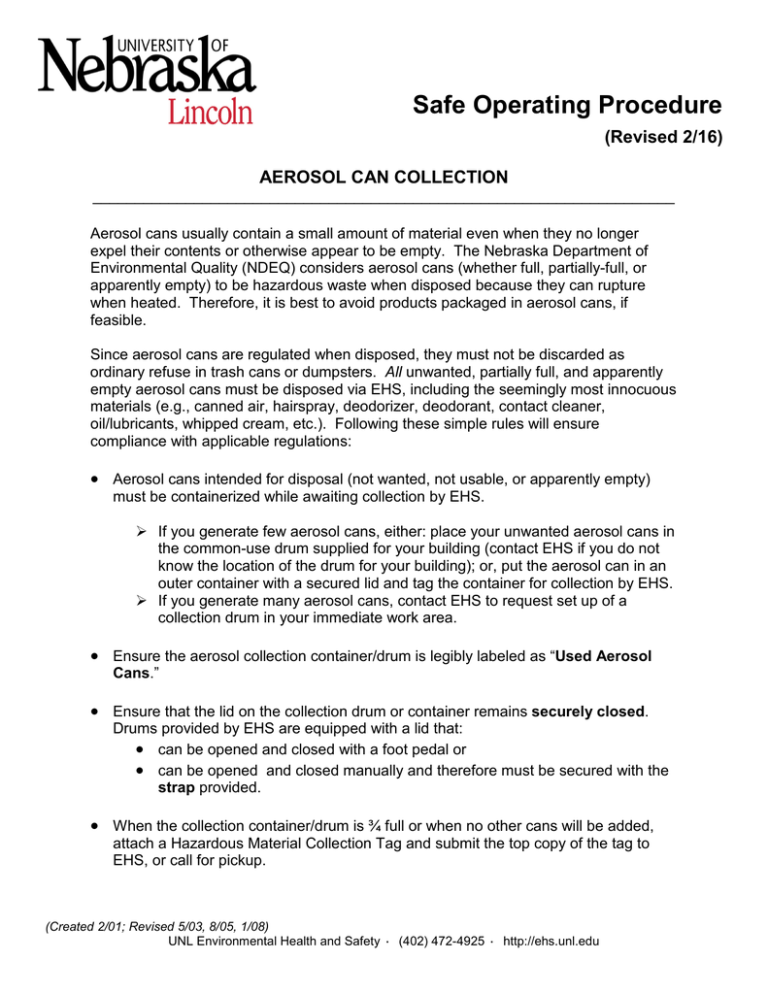
Safe Operating Procedure (Revised 2/16) AEROSOL CAN COLLECTION _____________________________________________________________________ Aerosol cans usually contain a small amount of material even when they no longer expel their contents or otherwise appear to be empty. The Nebraska Department of Environmental Quality (NDEQ) considers aerosol cans (whether full, partially-full, or apparently empty) to be hazardous waste when disposed because they can rupture when heated. Therefore, it is best to avoid products packaged in aerosol cans, if feasible. Since aerosol cans are regulated when disposed, they must not be discarded as ordinary refuse in trash cans or dumpsters. All unwanted, partially full, and apparently empty aerosol cans must be disposed via EHS, including the seemingly most innocuous materials (e.g., canned air, hairspray, deodorizer, deodorant, contact cleaner, oil/lubricants, whipped cream, etc.). Following these simple rules will ensure compliance with applicable regulations: • Aerosol cans intended for disposal (not wanted, not usable, or apparently empty) must be containerized while awaiting collection by EHS. If you generate few aerosol cans, either: place your unwanted aerosol cans in the common-use drum supplied for your building (contact EHS if you do not know the location of the drum for your building); or, put the aerosol can in an outer container with a secured lid and tag the container for collection by EHS. If you generate many aerosol cans, contact EHS to request set up of a collection drum in your immediate work area. • Ensure the aerosol collection container/drum is legibly labeled as “Used Aerosol Cans.” • Ensure that the lid on the collection drum or container remains securely closed. Drums provided by EHS are equipped with a lid that: • can be opened and closed with a foot pedal or • can be opened and closed manually and therefore must be secured with the strap provided. • When the collection container/drum is ¾ full or when no other cans will be added, attach a Hazardous Material Collection Tag and submit the top copy of the tag to EHS, or call for pickup. (Created 2/01; Revised 5/03, 8/05, 1/08) UNL Environmental Health and Safety · (402) 472-4925 · http://ehs.unl.edu

